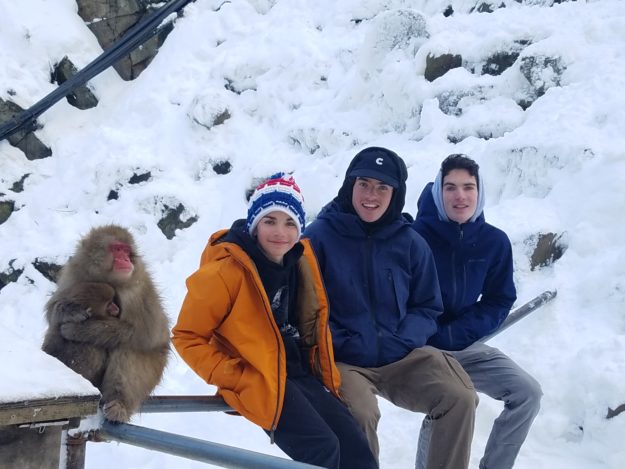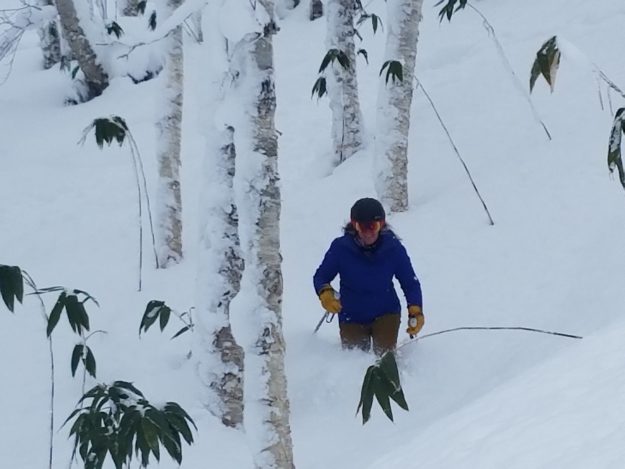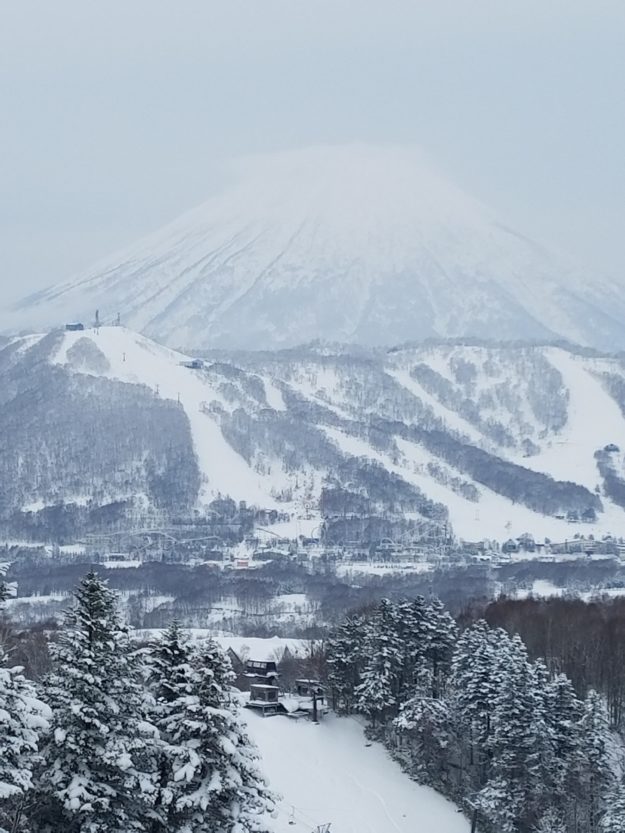Widgetized Section
Go to Admin » Appearance » Widgets » and move Gabfire Widget: Social into that MastheadOverlay zone
Japan ski travel a distant memory as Hokkaido declares state of emergency

Is it ironic or just fortuitous that the same week I wrote a ski-travel story for the Vail Daily featuring my December trip to Rusutsu on the northern island of Hokkaido, Japan, a state of emergency was declared there over the growing novel coronavirus outbreak called Covid-19?
Fortuitous in the sense that I originally had wanted to push our trip back to February or March, when hopefully the prices would be a little less steep and the snow would be deeper than the holiday window we chose. Had we waited, we probably would have had to cancel.

The Japanese response to the viral outbreak that originated in Wuhan, China, has been blasted by critics who say Prime Minister Shinzo Abe has lacked urgency and the proper level of concern for his people. Meanwhile, the U.S. response appears to be equally chaotic and mishandled.
Vice President Mike Pence is being questioned as the point person because of his past mishandling of an HIV outbreak in Indiana, the stock market is plummeting and President Donald Trump’s newly anointed medal of freedom recipient, Rush Limbaugh, is calling the virus a common cold that’s being politically weaponized against Trump.
This while Dr. Anthony Fauci, a preeminent immunologist with the National Institutes of Health who’s worked in the previous seven administrations – and clearly actually deserves the presidential medal of freedom he received – has been silenced by Team Trump.
No wonder the markets are crumbling – especially travel and tourism stocks. Vail Resorts, whose Epic Pass includes Rusutsu and Hakuba Valley in Japan, has seen its shares drop from $251 to $212 just in the last week.
Next month’s World Cup Finals of ski racing are reportedly in danger due to the outbreak in northern Italy, and races there this weekend may be conducted with no one in the stands.
The Tokyo 2020 Summer Olympics could be facing similar uncertainties, while the 2022 Winter Olympics in Beijing, China, were always a question mark in my book.
So with that cheery preamble, here’s a repost of a ski-travel story for the Vail Daily that ran this week:
Japow: Skiing the epic resorts of Japan
RUSUTSU, HOKKAIDO, Japan — Some people have snow-riding bucket lists; I have a Mount Rushmore:
Ski the European Alps (checked that one off as a kid first learning to ski in Bavaria when my U.S. Air Force father was stationed in Germany, and then again covering the 2006 Torino Winter Olympics in Italy).
Ski the Chugach Mountains of Alaska via helicopter (40th birthday present from my wife, who upped my life insurance policy, sent me off with Chris Anthony and his crew at Points North, and then seemed surprised when I came back).
Ski Japow (crossed that one off with a full-on family ski trip to Japan over the Christmas break … and that will be the focus of this article).
But who’s my Lincoln? Or Washington if you go right to left? Maybe a family heli trip to somewhere less terrifying than Alaska? Or South America in our summertime to check out Las Leñas (Argentina) and/or Portillo (Chile)? Or New Zealand’s Southern Alps? That remains to be determined, and I’m wide open to suggestions.
For now, let’s talk Japow. You’ve seen it in all the ski films for years: Legendary powder that blows in from Siberia, across the Sea of Japan and piles up in ridiculous amounts of 600 or more inches a season (that’s 50 feet, or 15 meters). And it’s not coastal snow ala Sierra Cement, because it’s so freaking cold coming in from Russia with love, and maybe a touch of radiation.
We based our entire trip on our Vail Resorts’ Epic Passes, which is kind of silly when you consider the most expensive one-day adult lift tickets are around 8,000 yen ($70). Suffice to say, by the time you’ve flown a family of five to Japan for Christmas and locked in your lodging, the skiing is the cheapest thing. Still, we wanted to see the ski areas Vail Resorts has partnered with.

That meant a quick, inter-island domestic flight after a couple of fun nights in Tokyo (on the main island of Honshu) up to Sapporo on the northern island of Hokkaido. Site of the ’72 Winter Games and famous for its beer and sake, Sapporo seems like a beautiful destination in and of itself, but we were quickly off by luxurious motor coach (a big bus) to Rusutsu ski resort.
Your Epic Pass gets you five consecutive days at Rusutsu (with no lodging requirement), and we left Tokyo’s Haneda airport mid-morning and arrived at the mind-blowing Rusutsu Hotel & Convention in time (1.5-hour flight, plus 1.5-hour bus ride) for night skiing, just as a storm was rolling in from Siberia.
The next three days it just kept snowing, and Japanese skiers seemed to shy away from going off piste, leaving the wide-open. Low-angle spaces between the Japanese white birch trees and bamboo plants to the gaijin snow riders (a handful of Americans and Australians that time of year). You could return to your same line, run after run, and only cross your old tracks.
“The skiing at Rusutsu is second to none. Amazing areas, plenty of powder … good tree skiing, and also nowhere near as crowded as [nearby] Niseko at the moment, so easy to get on lifts,” said Gareth Rawlins, managing director of The Red House restaurant and lodge. “But, yes, you hit the nail on the head: 80s Japanese weirdness, bereft of style or even reasoning.”
That’s an apt description of the neighboring Rusutsu Resort & Convention, where we stayed and enjoyed amazing and affordable dining options ranging from tradition Japanese to Chinese and Italian, but were a bit stunned by a full-on summertime amusement park, a wave pool, Chuck E. Cheese-style animatronic singing bears, an indoor carousel, live caribou and more.
You pay a price for that kind of ambiance, so we were delighted to discover The Red House for Christmas dinner, serving shabu-shabu hotpots with Hokkaido vegetables and meats, including local Wagyu beef and Japanese whiskey. Think yofu izakaya (or foreign-style fusion).
“This area is now the talk of Hokkaido. I have a lot of friends in [Niseko, which is on Alterra’s Ikon Pass], and everyone talks about Rusutsu as the next ‘big spot,” added Rawlins, who claims nearby Niseko is very crowded (we didn’t check it out).
“The Vail [partnership] has created almost all of that buzz [at Rusutsu],” added Rawlins, an Australian. “We would certainly love to see more Americans and Aussies, etcetera. The Asians are lovely people and good customers, but the Americans and Aussies just drink more!”
Interestingly, Rusutsu for a time had a season-pass partnership with Steamboat Ski Area when its COO Rob Perlman, also a former Vail exec, bumped into the Japanese owner of Rusutsu (and owner in the 90s of Steamboat itself) on a plane ride. There’s still a mid-mountain Rusutsu restaurant serving killer, cheap ramen bowls, called Steamboat – complete with the logo.
We were fortunate to have started our ski trip in Rusutsu, where it was early season and not all of the mountain was open, but we had plenty of great snow. They are having a very off year by their standards, and the settled base at the top is still only about where Vail is at 6-plus feet.
Part two of our Japow trip wound up not involving any skiing at all. We skied a half day of Rusutsu powder, then flew out of Sapporo’s New Chitose airport into Tokyo Haneda, where our late-night travel options to Nagano were somewhat limited. Seems a mid-October typhoon took out several of the Shinkansen bullet trains and the very nice, comfortable and affordable Nagano Snow Shuttle buses don’t run that late, so we were relegated to a pricey van service.
We rolled into our awesome Zen Chalets Hakuba cabin in Happo One at 1 a.m. in a driving rainstorm. About 1.5 hours from Nagano – site of the 1998 Winter Games made famous by Hermann Maier’s spectacular downhill crash and Jonny Moseley’s gold medal mogul run – lies Hakuba Valley, where your Epic Pass is good for five days at no fewer than 10 different ski areas. Because it was raining, with mandatory downloads, we decided to play tourist.

I should qualify that statement by saying that it was clear to us that Rusutsu may have the snow but Hakuba clearly has the terrain (and usually a lot of snow at 12 meters a season). The mountains I saw once the rain (snow up high) rolled out reminded me of Alaska’s Chugach or British Columbia’s Coast Range. They rise sharply off the ocean with sheer and dramatic lines.
“Other than the lift-ticket prices, the sheer volume of snow is the only real difference between Vail and the Japanese resorts; well, that and the food, which is amazing here and relatively cheap,” said Michael Kotevski, an Australian who runs the Zen Chalets but got hooked on skiing at Vail in 2002, where he proposed to his wife Sarah in Blue Sky Basin.
“Niseko and Rusutsu have the most snow I have ever seen in my life, but they are lacking in vertical and pitch,” Kotevski added. “Hakuba, on the other hand, has some of the easiest access side-country alpine terrain that is comparable to heli operations, hence its popularity with free riders.”
Hakuba, unlike, Rusutsu, has a very developed ski-town infrastructure that makes it a major international destination for Australians whose home mountains may be Vail Resorts-owned Perisher, Falls Creek or Hotham (Australia’s only a 9-hour flight to Japan versus 12 hours from Colorado). But it’s increasingly a hotspot for Chinese, Malaysian and Korean snow riders.
I felt bad for everyone there this season – not only the Aussies whose homeland was on fire at the time but now the tourism industry in general with the coronavirus. Luckily, we were there before anyone had heard that word, although everyone wears masks, even in the ski resorts.
Instead of skiing Hakuba (we were worked from Rusutsu anyway), we did a day of recovery and then jumped a very cool Japan Ski Tours trip to Jigokudani Monkey Park and the 7th-century Zenkō-ji Buddhist temple in Nagano. The full-day bus tour includes a nice hike through the woods up to the hot springs famous for its population of snow monkeys and a fantastic traditional Japanese lunch in the lovely town of Obuse, where you can also check out museums, galleries, shops and sake brewery tasting rooms (Nagano is also famous for its rice wine).
The tour concludes with a stroll through the beautiful Zenkō-ji Buddhist temple in downtown Nagano. Sure, it was a touristy day, but we really got a good feel for this beautiful area, which includes Vail’s sister city of Yamanouchi, although not on this particular tour.
And the beauty is, we left something to come back for: The clearly sick skiing of Hakuba Valley.
For more details and tips, see my three-part series of blogs on RealVail.com.


